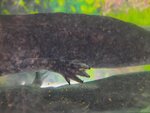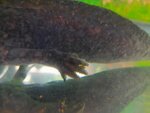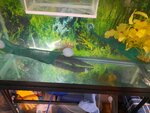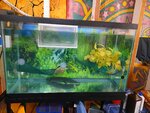Wildgreen
New member
hey update to my last post, my axolotl is still sick. she was fridged for a bit, it didnt seem to make a difference. i have tried a few different meds (furan 2, kanaplex, general cure, meth blue, salt, and just finished 14 days of baytril topically). nothing seems to make it better, except the meth blue seems to help with some fuzzy fungus that develops on her toe tips.
she has sores all over, blood blisters and white spots (almost like ick spots). she is not eating, but i have gotten her to take 3 guppies throughout the months of her refusing nightcrawlers, salmon pellets, and black worms. she ate a small molly last night (fish are all tong fed to her). she acts mostly normal, hanging out on the bottom not floating or anything. my vet doesnt really seem to have a clue and their next appt available was the 29. so looking for any advice!
ive been told by someone on fb it could be chytrid/bd or ATV (Ambystoma Tigrinum Virus). she just seems to be wasting away, and I worry about trying to force feed with the sores all over her skin... see the pics im adding.
its also very strange she has had NO gill infections, when she used to have them off and on her whole life (ive had her about 5 yrs)
she has sores all over, blood blisters and white spots (almost like ick spots). she is not eating, but i have gotten her to take 3 guppies throughout the months of her refusing nightcrawlers, salmon pellets, and black worms. she ate a small molly last night (fish are all tong fed to her). she acts mostly normal, hanging out on the bottom not floating or anything. my vet doesnt really seem to have a clue and their next appt available was the 29. so looking for any advice!
ive been told by someone on fb it could be chytrid/bd or ATV (Ambystoma Tigrinum Virus). she just seems to be wasting away, and I worry about trying to force feed with the sores all over her skin... see the pics im adding.
its also very strange she has had NO gill infections, when she used to have them off and on her whole life (ive had her about 5 yrs)
Attachments
-
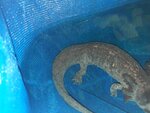 20201004_212634.jpg5.1 MB · Views: 585
20201004_212634.jpg5.1 MB · Views: 585 -
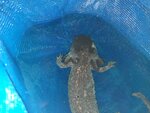 20201004_212442.jpg5.3 MB · Views: 233
20201004_212442.jpg5.3 MB · Views: 233 -
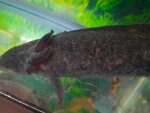 20201003_202136.jpg1.9 MB · Views: 232
20201003_202136.jpg1.9 MB · Views: 232 -
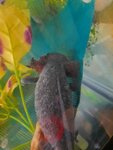 20201003_191254.jpg936.7 KB · Views: 227
20201003_191254.jpg936.7 KB · Views: 227 -
 20201003_191220.jpg960.8 KB · Views: 210
20201003_191220.jpg960.8 KB · Views: 210 -
 20200929_200345.jpg989.6 KB · Views: 229
20200929_200345.jpg989.6 KB · Views: 229 -
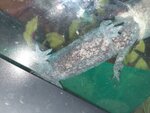 20200925_205806.jpg3.5 MB · Views: 206
20200925_205806.jpg3.5 MB · Views: 206 -
 20200925_205738.jpg800.2 KB · Views: 189
20200925_205738.jpg800.2 KB · Views: 189 -
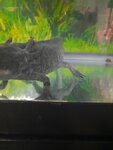 20200925_205513.jpg844.6 KB · Views: 165
20200925_205513.jpg844.6 KB · Views: 165

